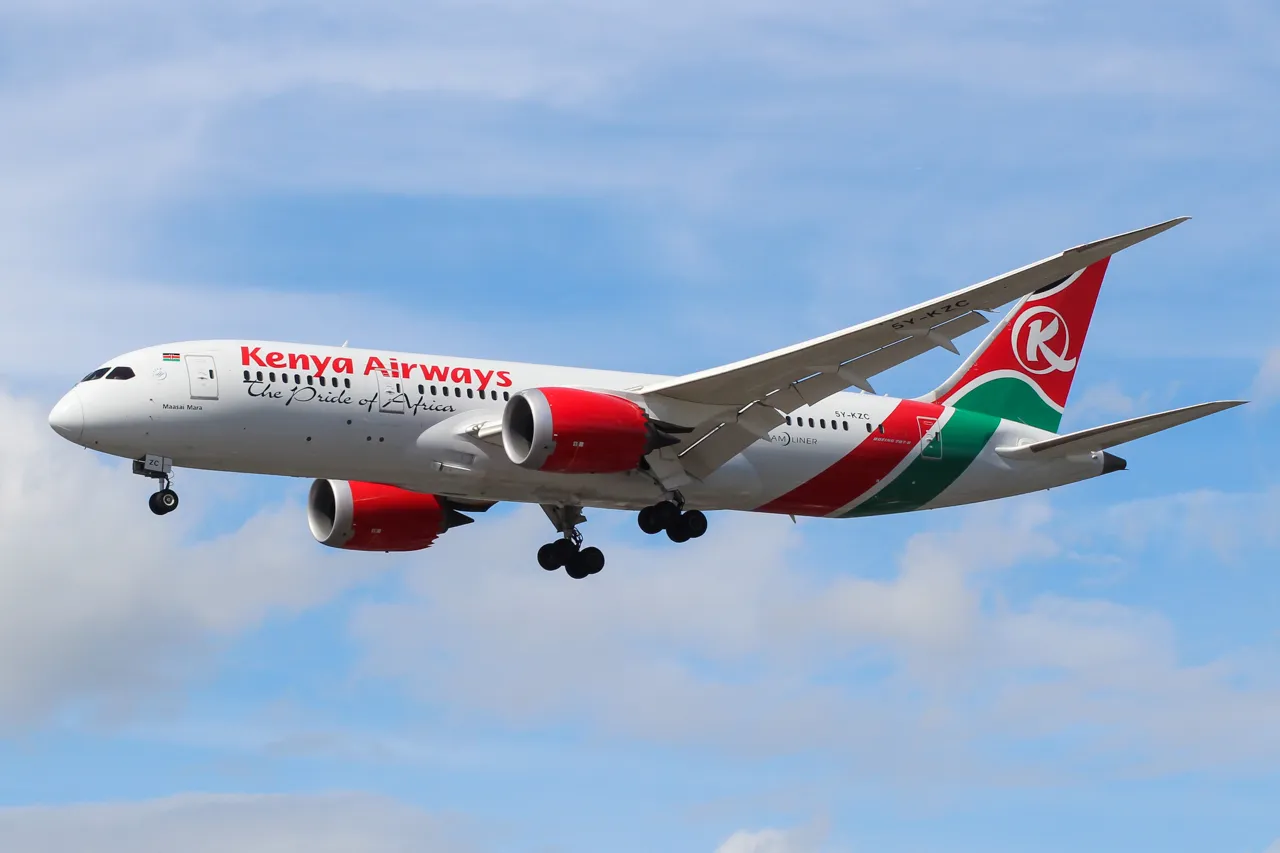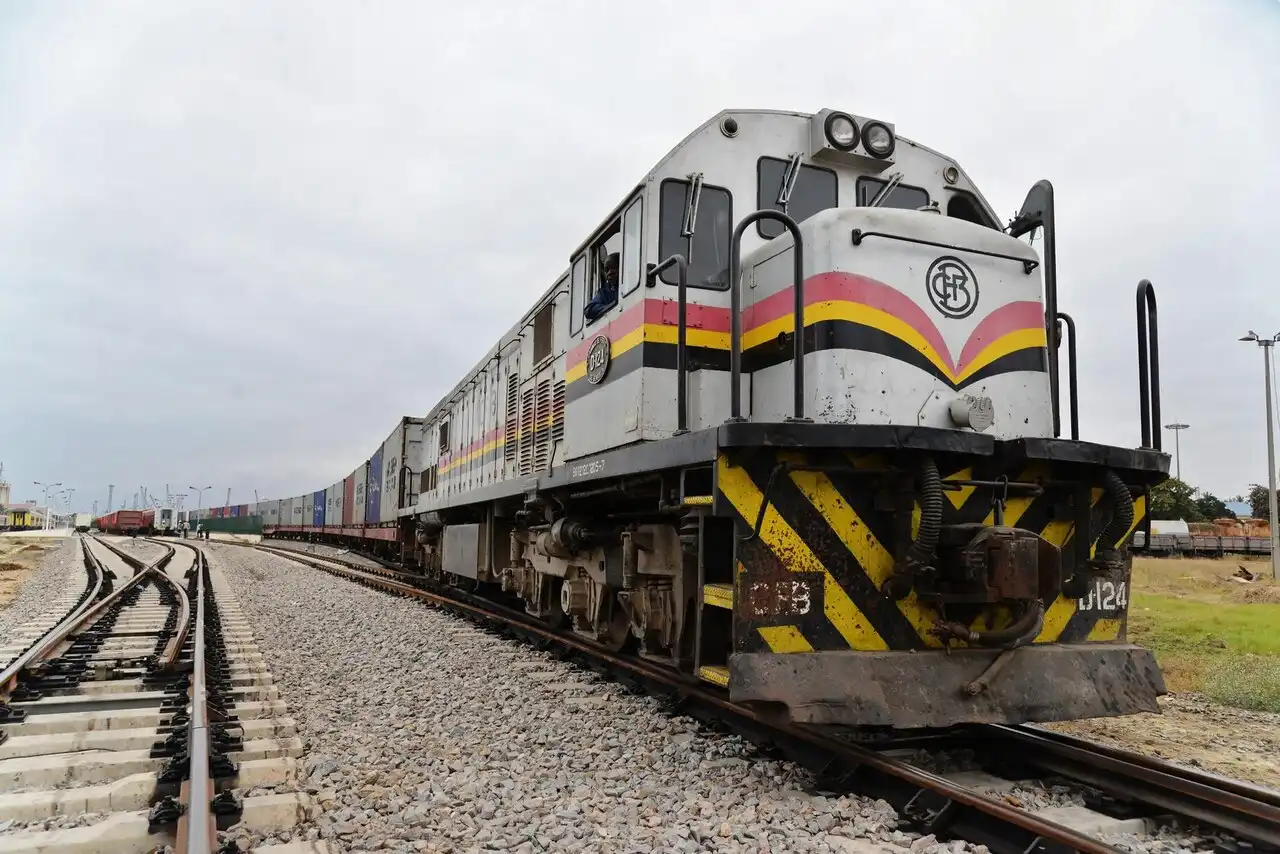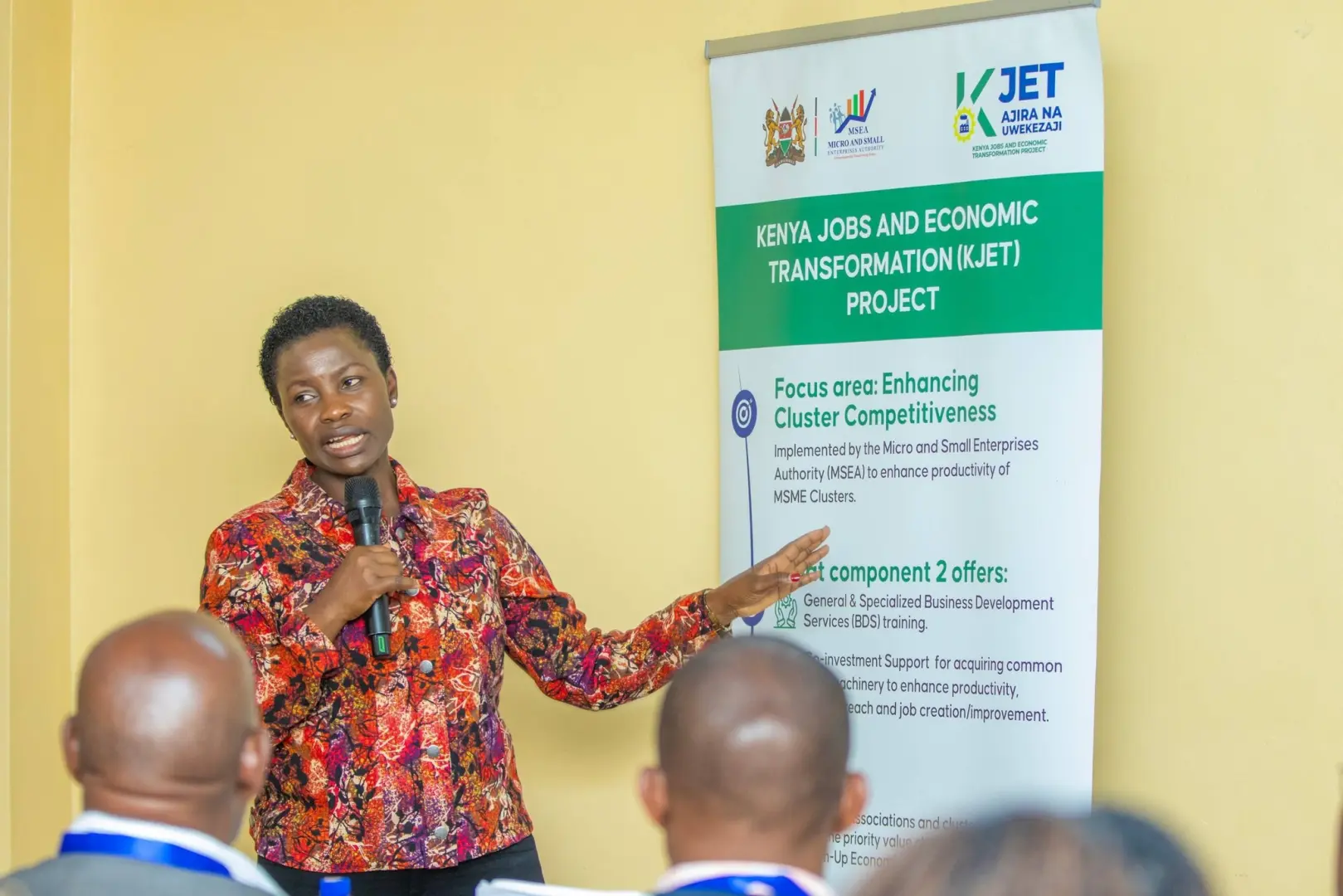Kenya Airways, one of Africa’s three largest airlines, has announced plans to raise at least $500 million in additional capital to expand and modernize its fleet by the first quarter of 2026, following a significant financial setback that saw the carrier post a 12.17 billion shillings ($94.34 million) pretax loss in the first half of 2025.
The dramatic reversal from a 634 million shillings profit in the same period last year underscores the volatile nature of African aviation and highlights the operational challenges facing the Nairobi-based carrier as it battles Ethiopian Airlines for regional dominance in an increasingly competitive market.
Build the future you deserve. Get started with our top-tier Online courses: ACCA, HESI A2, ATI TEAS 7, HESI EXIT, NCLEX-RN, NCLEX-PN, and Financial Literacy. Let Serrari Ed guide your path to success. Enroll today.
Grounded Fleet Takes Financial Toll
The airline’s financial troubles stem primarily from three Boeing 787-8 Dreamliners being out of commission for maintenance, significantly reducing capacity and revenue-generating potential. CEO Allan Kilavuka told investors that one aircraft resumed service in July 2025, with the airline working to restore its full fleet by next year.
“We’ve said the minimum that we are gunning for is about half a billion dollars, which we believe [is] a minimum. That will address the fleet expansions that we’re looking [for],” Kilavuka stated during an investor briefing. The airline plans to identify funding sources and secure shareholder approval within the first three months of 2026.
The financial impact was severe: operating losses reached 6.2 billion shillings, a dramatic reversal from a 1.3 billion shilling profit in the first half of 2024. Revenue declined to 74.5 billion shillings from 91.5 billion shillings during the same period last year, reflecting the direct impact of reduced capacity on the airline’s financial performance.
Fleet Ownership Costs Surge 29%
Adding to the airline’s challenges, fleet ownership costs increased by 29% in the first half of 2025, largely due to asset revaluation of leased aircraft under new accounting measures and the addition of a new Boeing 737-800 on long-term lease from Dubai Aerospace Enterprise (DAE).
The 170-seat aircraft, which expanded KQ’s fleet to 35 aircraft, was part of the airline’s ongoing fleet expansion strategy aimed at increasing capacity and operational efficiency. However, the associated leasing costs have weighed heavily on the airline’s financial performance, contributing to the significant losses reported.
A Historic Comeback Interrupted
The 2025 financial setback is particularly disappointing given that Kenya Airways had achieved its first full-year profit in over a decade in 2024, posting 5.53 billion shillings in pretax profit compared with a loss of 22.86 billion shillings the year before. This historic turnaround was largely attributed to the airline’s Project Kifaru restructuring program, named after the Swahili word for rhinoceros, symbolizing resilience and strength.
The 2024 success was significantly boosted by foreign-exchange gains of 10.55 billion shillings, versus a loss of 15.04 billion shillings in 2023, as the Kenyan shilling strengthened more than 20% against the dollar. However, this currency advantage could not offset the operational challenges faced in the first half of 2025.
Ambitious Fleet Expansion Plans
Despite current financial headwinds, Kenya Airways maintains ambitious growth plans. The airline has unveiled a $400 million five-year fleet expansion strategy aimed at increasing its aircraft count from 34 to 53 planes by 2029. This expansion is central to the carrier’s strategy to compete more effectively in the African aviation market and restore sustainable profitability.
The expansion plan faces significant hurdles, including multi-year delays in new aircraft production due to global supply constraints and the maintenance challenges that have grounded part of its current fleet. To execute this ambitious plan, Kenya Airways is seeking flexible lease arrangements and government support to secure strategic investment.
Chairman Michael Joseph has emphasized the need for strategic investor support, highlighting the challenges facing African carriers in accessing capital markets on competitive terms. The airline’s financial restructuring needs come at a time when African aviation faces numerous structural challenges, including high fuel costs, regulatory fragmentation, and limited infrastructure development.
The Ethiopian Airlines Challenge
Kenya Airways’ financial struggles occur against the backdrop of intensifying competition from Ethiopian Airlines, which has significantly outgrown its East African rival. According to aviation industry data, there was a 26% capacity differential between the two airlines in 2000, but by 2024, that differential had increased to 423% in favor of Ethiopian Airlines.
Ethiopian Airlines has been named the Best Airline in Africa for 2025, marking its eighth consecutive win at the Skytrax World Airline Awards. The Addis Ababa-based carrier has pursued a clear and comprehensive long-term strategy, making Ethiopia’s capital a major African hub while connecting the continent to global destinations with modern aircraft.
Ethiopian Airlines currently operates 1.9 million seats monthly, representing continued capacity growth, while Kenya Airways has experienced a 19% capacity decline compared to the previous year. This divergence in performance highlights the different strategic approaches and execution capabilities of the two carriers.
Cargo Operations Expansion
Despite passenger operation challenges, Kenya Airways has continued expanding its cargo capabilities. The airline received its second Boeing 737-800 freighter in April 2024, bringing its total cargo fleet to four aircraft. This expansion aims to capitalize on opportunities from the African Continental Free Trade Area (AfCFTA) to catalyze trade within and outside the continent.
KQ Cargo deploys freighters to destinations including Sharjah, Dubai World Central, Jeddah, Riyadh, Dakar, Lagos, Mogadishu, Mumbai, and various other African cities. In 2022, Kenya Airways uplifted 68,900 tons of cargo, primarily consisting of fresh produce, textiles, electronics, spare parts, pharmaceutical products, and live animals.
Fuel your success with knowledge that matters. Enroll in our Online programs: ACCA, HESI A2, ATI TEAS 7, HESI EXIT, NCLEX-RN, NCLEX-PN, and Financial Literacy. Join Serrari Ed now and take control of your future.
Broader African Aviation Context
Kenya Airways’ challenges reflect broader systemic issues facing African aviation. African carriers operate under significant constraints, including fuel costs that are up to 40% higher due to weak refining capacity and import dependency, limited infrastructure with only 34% of sub-Saharan African airports having paved runways, and fragmented regulatory regimes.
The average effective interest rate for African airlines sits at 8.2%, compared to just 1-2% in developed economies, making fleet expansion and modernization significantly more expensive for African carriers. These structural disadvantages compound the operational challenges facing airlines like Kenya Airways as they seek to compete in global markets.
Project Kifaru: The Turnaround Strategy
Kenya Airways’ recovery plan, Project Kifaru, encompasses multiple phases of transformation:
Phase 1: Crisis Response (2020-2021) Triggered by COVID-19, this phase focused on basic cost optimization, fleet resizing, and workforce efficiency to ensure survival during the pandemic.
Phase 2: Stabilization (2022-2023) Emphasis on route optimization, operational reliability, and financial discipline to establish a sustainable operational base.
Phase 3: Growth and Expansion (2024-2027) Strategic fleet expansion, network development, and market consolidation to regain competitive positioning in African aviation.
The strategy aligns with Africa’s broader integration goals through three key frameworks: the African Continental Free Trade Area (AfCFTA), the Single African Air Transport Market (SAATM), and the Pan-African Airline Group (PAAG) initiative for shared infrastructure and economies of scale.
Route Network and Performance Challenges
Kenya Airways currently serves about 42 international destinations in 34 countries, significantly smaller than Ethiopian Airlines’ network of over 120 international destinations in more than 80 countries. This network size differential impacts the airline’s ability to offer competitive connections and limits revenue diversification opportunities.
The airline’s performance metrics also face challenges, with on-time performance at 75%, falling short of its 85% target. Geopolitical tensions have impacted specific routes, leading to temporary suspensions of flights to destinations including Goma and Mogadishu, further constraining revenue opportunities.
However, new routes have shown promising results. The Gatwick route has outperformed initial passenger demand forecasts, spurring optimism and plans to adjust flight frequencies upward pending fleet expansion. This demonstrates market demand for Kenya Airways services when operational constraints are addressed.
Government Support and Ownership Structure
Kenya Airways has historically relied on government financial support during challenging periods. The government paid off a $150 million loan in January 2025 that the airline had received from local commercial banks, demonstrating continued state commitment to the national carrier’s survival.
The airline’s ownership structure has evolved significantly over time. Initially privatized in the 1990s with KLM as a strategic partner, the government shareholding has increased to 48.9% with KLM’s stake reduced to 7.8%. This shift reflects the challenges of maintaining private investment in African aviation and may continue evolving as the airline seeks additional capital.
Industry Recognition and Service Standards
Despite operational challenges, Kenya Airways maintains recognition for service quality. The airline was ranked Africa’s second most efficient airline in 2023 with a 71.86% on-time arrival rate and received awards for Best African Airline for customer service and on-time performance from Air Help in 2024.
The carrier’s passenger experience features flat-bed seats in Premier World (Business Class) on 787-8s, complimentary meals, and premium lounge facilities at Nairobi’s Jomo Kenyatta International Airport. These service standards help differentiate Kenya Airways in an increasingly competitive market.
Capital Raising Options and Strategic Partnerships
Looking ahead, Kenya Airways is considering multiple channels for capital raising, including strategic partnerships and investor arrangements. CEO Kilavuka indicated the airline aims to prepare an investment memorandum by the end of the third quarter of 2025, targeting both fleet expansion and ancillary business development.
The funds will support not only aircraft acquisition but also enhance cargo capacity and operational efficiency improvements. The airline’s ability to secure favorable financing terms will be crucial for the success of its expansion plans, particularly given the challenging financing environment for African carriers.
Regional Competition and Market Dynamics
The African aviation market is experiencing significant change, with three of four IATA Africa regions now operating at higher capacity levels than in summer 2019. North Africa has shown particularly strong growth with over 24% capacity increases, while Eastern Africa, where Kenya Airways operates, has achieved more modest growth of around 10%.
Competition is intensifying not only from Ethiopian Airlines but also from other regional carriers and international airlines expanding African operations. Ethiopian Airlines remains Africa’s largest carrier, operating 1.9 million seats in recent months with continued growth, while Kenya Airways faces capacity constraints due to fleet availability issues.
Future Prospects and Strategic Outlook
Despite current challenges, Kenya Airways maintains strategic advantages in its home market and regional connectivity. The airline’s hub position at Nairobi’s Jomo Kenyatta International Airport provides access to East African markets and serves as a gateway between Africa and global destinations.
The success of Project Kifaru’s next phase will depend on several critical factors:
Fleet Restoration: Successfully returning grounded 787s to service and maintaining operational reliability across the fleet.
Capital Access: Securing the targeted $500 million in funding on favorable terms to support expansion plans.
Market Recovery: Benefiting from continued recovery in African air travel demand and regional economic growth.
Operational Excellence: Improving on-time performance, customer service, and cost management to compete effectively with Ethiopian Airlines and other regional carriers.
Strategic Partnerships: Developing mutually beneficial relationships with international carriers and investors to enhance network connectivity and financial stability.
The next 12-18 months will be crucial for Kenya Airways as it seeks to implement its capital raising plans and restore operational stability.
Success will require balancing immediate financial needs with long-term strategic positioning in an increasingly competitive African aviation landscape.
The airline’s journey from near-insolvency in 2018 to historic profitability in 2024, followed by renewed challenges in 2025, illustrates the volatility and complexity of African aviation. As CEO Kilavuka emphasized, the airline’s resilience and commitment to growth remain strong, but execution will be critical to regaining sustainable profitability and competitive positioning against formidable regional rivals like Ethiopian Airlines.
Ready to take your career to the next level? Join our Online courses: ACCA, HESI A2, ATI TEAS 7 , HESI EXIT , NCLEX – RN and NCLEX – PN, Financial Literacy!🌟 Dive into a world of opportunities and empower yourself for success. Explore more at Serrari Ed and start your exciting journey today! ✨
Track GDP, Inflation and Central Bank rates for top African markets with Serrari’s comparator tool.
See today’s Treasury bonds and Money market funds movement across financial service providers in Kenya, using Serrari’s comparator tools.
Photo source: Google
By: Montel Kamau
Serrari Financial Analyst
27th August, 2025
Article, Financial and News Disclaimer
The Value of a Financial Advisor
While this article offers valuable insights, it is essential to recognize that personal finance can be highly complex and unique to each individual. A financial advisor provides professional expertise and personalized guidance to help you make well-informed decisions tailored to your specific circumstances and goals.
Beyond offering knowledge, a financial advisor serves as a trusted partner to help you stay disciplined, avoid common pitfalls, and remain focused on your long-term objectives. Their perspective and experience can complement your own efforts, enhancing your financial well-being and ensuring a more confident approach to managing your finances.
Disclaimer: This article is for informational purposes only and does not constitute financial advice. Readers are encouraged to consult a licensed financial advisor to obtain guidance specific to their financial situation.
Article and News Disclaimer
The information provided on www.serrarigroup.com is for general informational purposes only. While we strive to keep the information up to date and accurate, we make no representations or warranties of any kind, express or implied, about the completeness, accuracy, reliability, suitability, or availability with respect to the website or the information, products, services, or related graphics contained on the website for any purpose. Any reliance you place on such information is therefore strictly at your own risk.
www.serrarigroup.com is not responsible for any errors or omissions, or for the results obtained from the use of this information. All information on the website is provided on an as-is basis, with no guarantee of completeness, accuracy, timeliness, or of the results obtained from the use of this information, and without warranty of any kind, express or implied, including but not limited to warranties of performance, merchantability, and fitness for a particular purpose.
In no event will www.serrarigroup.com be liable to you or anyone else for any decision made or action taken in reliance on the information provided on the website or for any consequential, special, or similar damages, even if advised of the possibility of such damages.
The articles, news, and information presented on www.serrarigroup.com reflect the opinions of the respective authors and contributors and do not necessarily represent the views of the website or its management. Any views or opinions expressed are solely those of the individual authors and do not represent the website's views or opinions as a whole.
The content on www.serrarigroup.com may include links to external websites, which are provided for convenience and informational purposes only. We have no control over the nature, content, and availability of those sites. The inclusion of any links does not necessarily imply a recommendation or endorsement of the views expressed within them.
Every effort is made to keep the website up and running smoothly. However, www.serrarigroup.com takes no responsibility for, and will not be liable for, the website being temporarily unavailable due to technical issues beyond our control.
Please note that laws, regulations, and information can change rapidly, and we advise you to conduct further research and seek professional advice when necessary.
By using www.serrarigroup.com, you agree to this disclaimer and its terms. If you do not agree with this disclaimer, please do not use the website.
www.serrarigroup.com, reserves the right to update, modify, or remove any part of this disclaimer without prior notice. It is your responsibility to review this disclaimer periodically for changes.
Serrari Group 2025
















